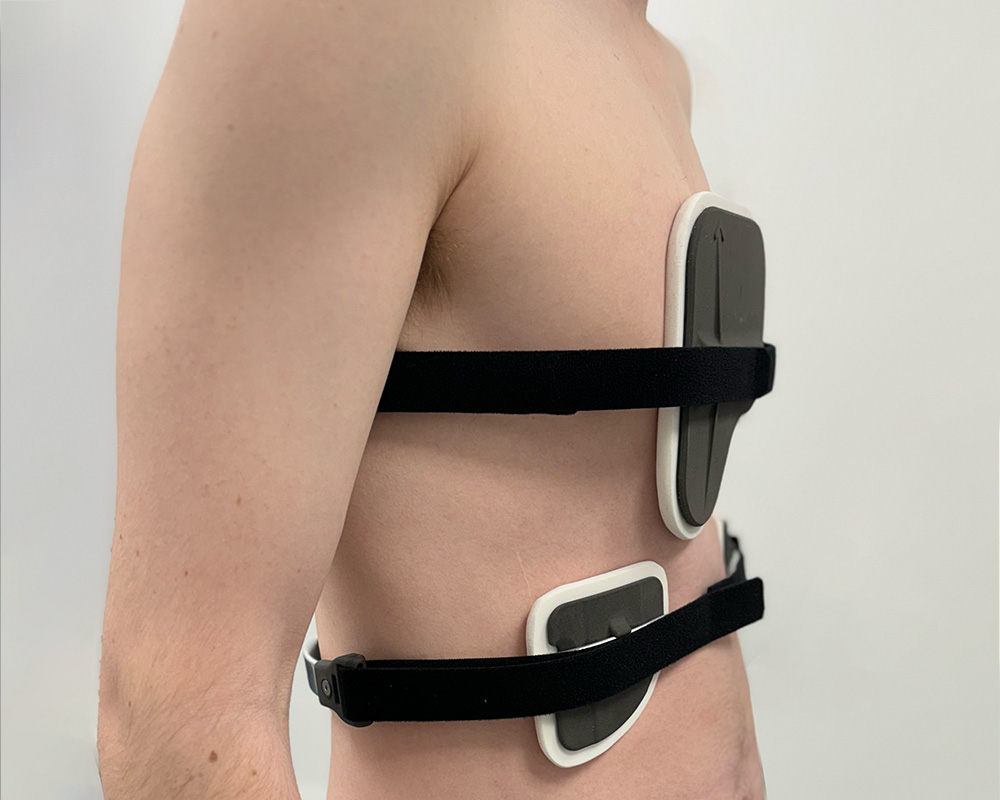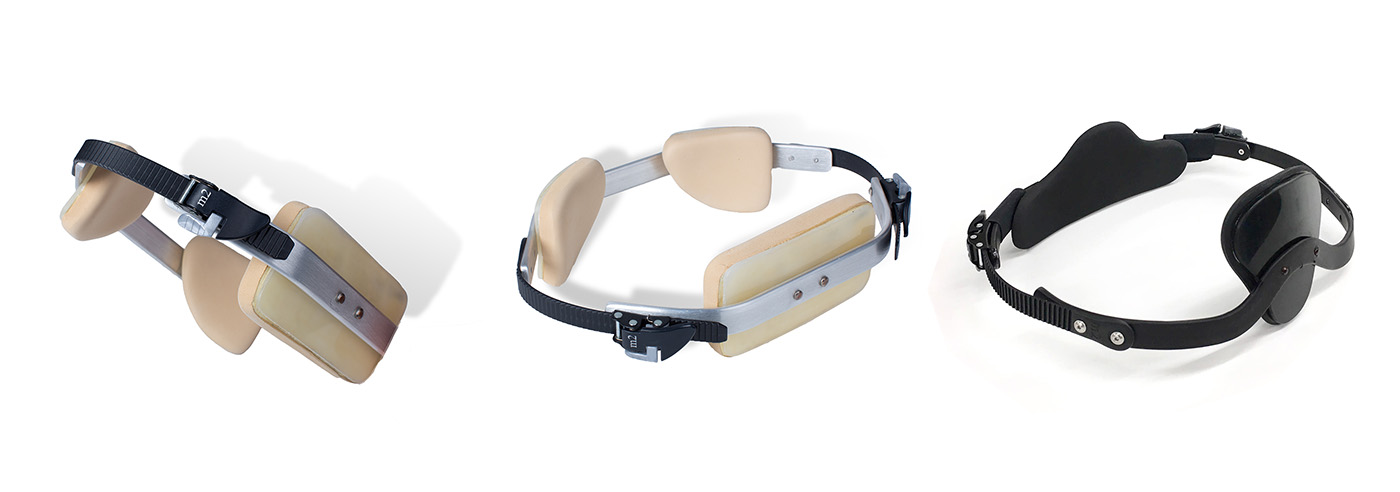
Our new slimline dynamic chest compressor brace for treating pectus deformity
09 April 2024
We are proud to announce the launch of our latest innovation in non-surgical treatment for pectus deformities. Our new dynamic chest compressor is one of the slimmest pectus braces on the market and is designed to reshape the chest without the need for invasive surgery.
Pectus deformity can significantly impact a person’s self-esteem and sense of wellbeing. At the London Orthotic Consultancy, our mission has always been to empower our pectus patients to achieve optimal results and confidence in their appearance.
With years of experience treating pectus carinatum and pectus excavatum patients since 2010, we understand the challenges and concerns associated with these conditions. That's why we've dedicated ourselves to developing a solution that not only addresses the physical aspects of chest deformity but also prioritises comfort and discretion.
Each brace is bespoke to an individual’s measurements and tailored to treat their specific chest deformity. It is available as a brace for the treatment of pectus carinatum and rib flaring.

Side profile of patient wearing the dynamic chest compressor pectus brace as well as the rib flaring brace over the rib cage
Over the last 12 months, our designers have been developing a slimmer, lighter pectus brace to treat pectus deformity.
Our new brace offers several benefits to patients:
Our new dynamic chest compressor boasts a slim-fitting, low-profile design, making it far less bulky and noticeable under clothing compared to traditional braces. This feature is particularly important for our adolescent patients, who may already be self-conscious about their chest's appearance and the prospect of wearing a brace.
Durability is essential for any medical device meant for long-term wear. That's why our brace features a robust design, utilising aluminium frames and 3D-printed parts that have undergone rigorous testing to ensure they can withstand everyday wear and tear.
The lightweight aluminium bars used in our brace make it more comfortable to wear and carry around, promoting better compliance among patients. Additionally, our Velcro strap fastening system simplifies the process of putting on and taking off the brace, allowing for quick adjustments to pressure levels based on individual comfort.
One size does not fit all when it comes to treating pectus deformity. That's why our brace incorporates removable 3D-printed foam pads that can be tailored to each patient's unique chest measurements. These pads are not only comfortable but also easy to clean and swap out as needed throughout the treatment process.
We are committed to minimising our environmental impact wherever possible. That's why virtually all components of our dynamic chest compressor are recyclable, from the aluminium bars to the 3D-printed plastic clips and foam pads. By prioritising sustainability, we're not only improving patients' lives but also contributing to a healthier planet.
Sam Walmsley talks through the features of our slimline pectus brace
The launch of our new dynamic chest compressor represents a significant advance in the field of non-surgical treatment for pectus deformities.
If you or a loved one are seeking an effective and minimally-invasive solution for pectus deformity, we encourage you to get in touch and book a free virtual pectus consultation with one of our specialists today.
You can also use our free pectus photo diagnosis form to send us photos of your chest and one of our orthotists will get back to you with their assessment.

Previous dynamic chest compressor designs
This depends on several factors; the position of the chest wall deformity, its severity, the flexibility of the chest, the kind of results wanting to be achieved and the age of the person undergoing treatment for pectus excavatum or pectus carinatum.
Early adolescence (roughly between the ages of 12-16 years old) – is an optimum age to start treatment, given that the chest is still maturing, and flexible, permanent correction is more easily achievable. Once bracing treatment is complete and a patient has stopped growing, the deformity will not return. For younger pectus patients, conservative bracing is used to keep a deformity from worsening and can help them to avoid surgery in later life.
For older pectus patients (between the ages of 20 to 30) results can be harder to achieve, as the costal cartilage hardens into the bone as a person matures. Over the years we have successfully treated many adults for both pectus excavatum and pectus carinatum and active adults with flexible chests can expect good results.
Again, this hugely depends on what a patient wants to achieve from treatment; whether that’s avoidance of surgery, improvement in the appearance of the chest shape, reduction in rib flaring etc. All these goals are taken into consideration during your first consultation. While there are no serious health risks of having pectus carinatum or excavatum – beyond the cosmetic – for many patients and parents, treatment outcomes involve improving confidence and self-esteem. During our 2018 Pectus Patient Survey, 92% of pectus carinatum patients surveyed said that treatment had a ‘major improvement’ or ‘an improvement’ on their social life.
You can read the results of our 2018 Pectus Patient Survey and quality of life questionnaire here.
It is really important to continue exercising while going through bracing treatment. Exercise is fundamental to keeping the chest wall flexible. Our treatment programme incorporates a daily exercise routine of around 30-40 minutes of stretching using yoga poses, resistance bands, deep breathing exercises and general muscle stretches. Deep breathing exercises allow the lungs to expand against the chest wall, pushing it outwards.
Exercising with the brace on in the later stages of treatment can also make the chest correction more stable and permanent.
Swimming is one of the best forms of exercise to complement bracing treatment, as the body positions required to swim imitate the resistance band training designed to stretch the chest and increase its flexibility. Some swimming strokes are better for this than others, please check with your clinician. The brace should always be removed for contact sports and for swimming.
For most patients, one brace is often all that is needed to achieve a desired level of correction. They are each designed to last the duration of treatment and accommodate any growth that may occur in that time. Some patients have benefitted from having two braces – one to treat the main deformity and the other to treat rib flaring. For some pectus excavatum patients, having a brace apply pressure to the ribs – in addition to vacuum bell therapy – can greatly reduce the appearance of the depressed sternum area of the chest, forcing it upwards and outwards into a more corrective position.
If you are worried about your chest shape, or your child’s chest shape, then get in touch for a free Skype consultation with one of our pectus specialists who can assess their chest and discuss treatment options. We are always happy to communicate with local GPs, thoracic surgeons and consultants if a patient approaches us for bracing treatment after considering other options.